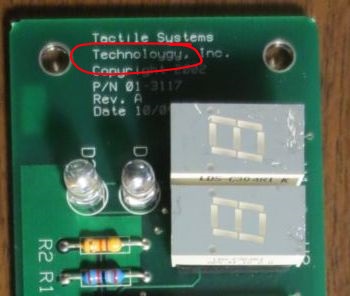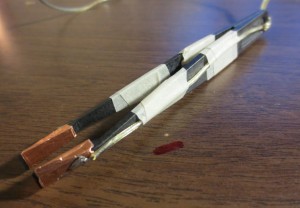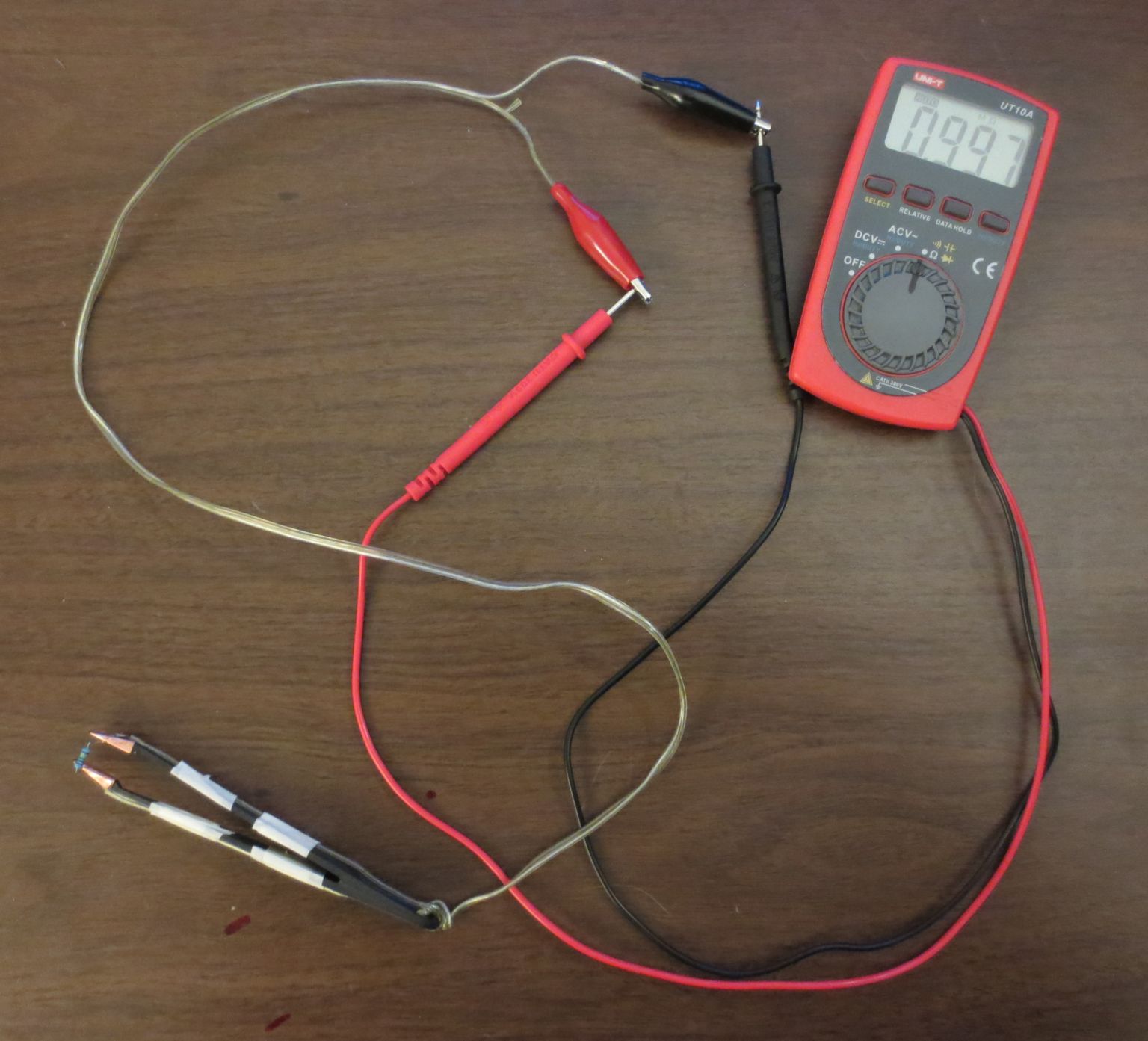Ax Man surplus in Minneapolis is a magical place. They have tons and tons of electronic and industrial surplus, plus a bunch of just general weird crap. It helps that the place is packed with the bizarre inventions of the owners and employees (robotic mannequins with mismatched limbs, motion sensing babies that cry when you walk by with a chilling robotic scream, etc.).
Last time I was up there, I found a board with a bunch of seven-segment displays, a chip, and a 6-pin connector. I thought the chip might be an LED driver I could look up, so I took a $2 bet and bought it, figuring I might be able to reverse engineer it.
The chip turned out to be a common LED driver, the MAX7221. I applied the circuit tracing technique I described earlier, and found that the connector easily mapped to power, ground, and signalling for the chip. So I made a clock out of it. Also, I spotted why the board was sent to surplus:
What a waste for Tactile Systems Technology…a whole run of boards fully populated, thrown out because of a silk screen typo :-). That company is still around — they make medical gear, so I guess the thought of a life saving device with a typo was a non-starter.
Build directions after the break. Continue reading Ax Man Clock




